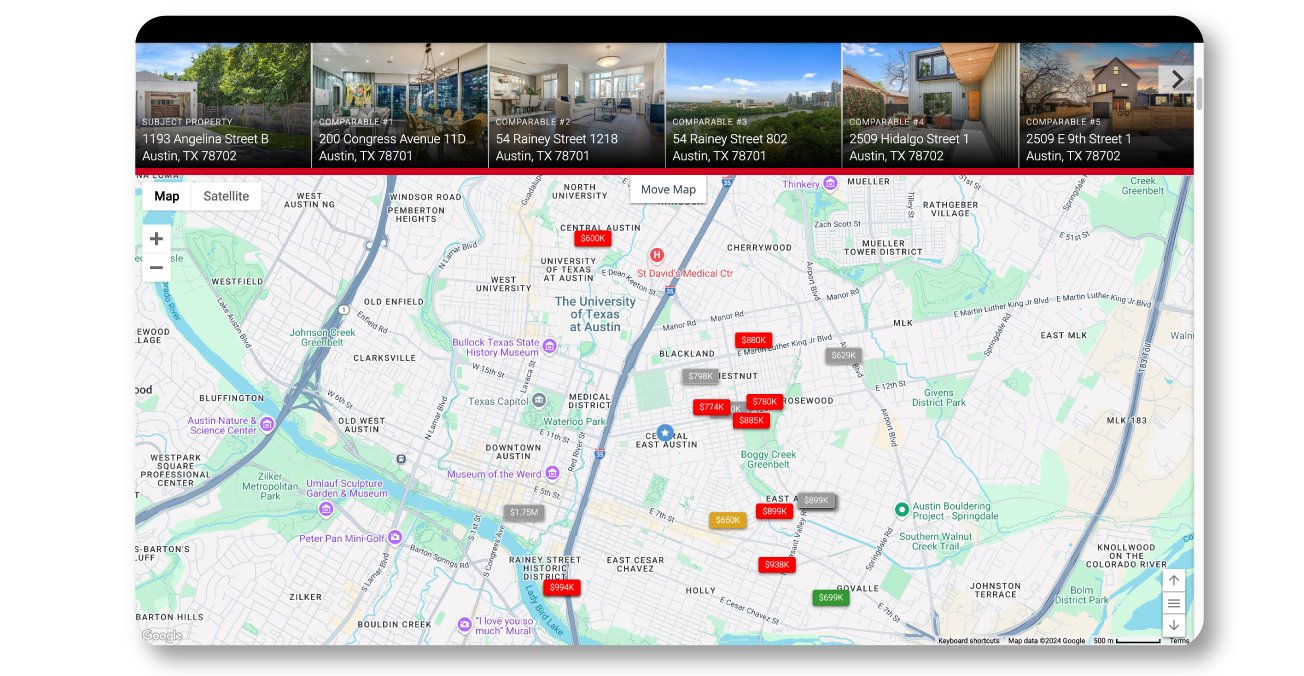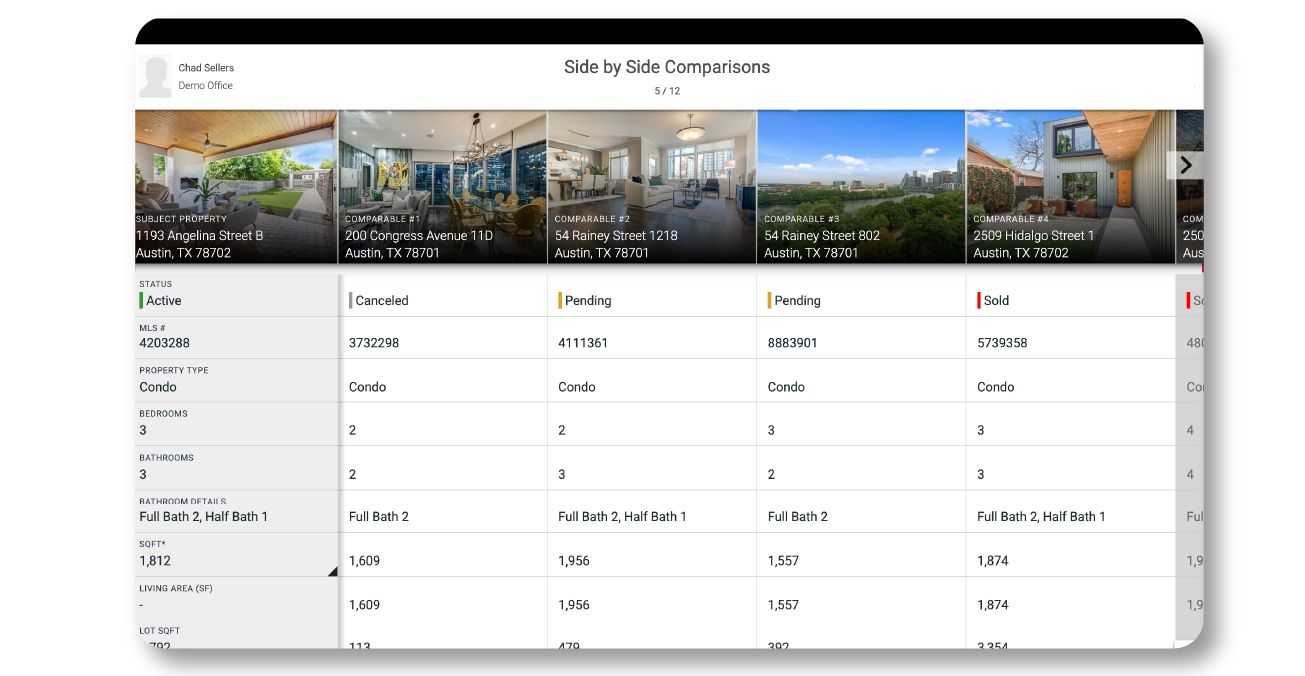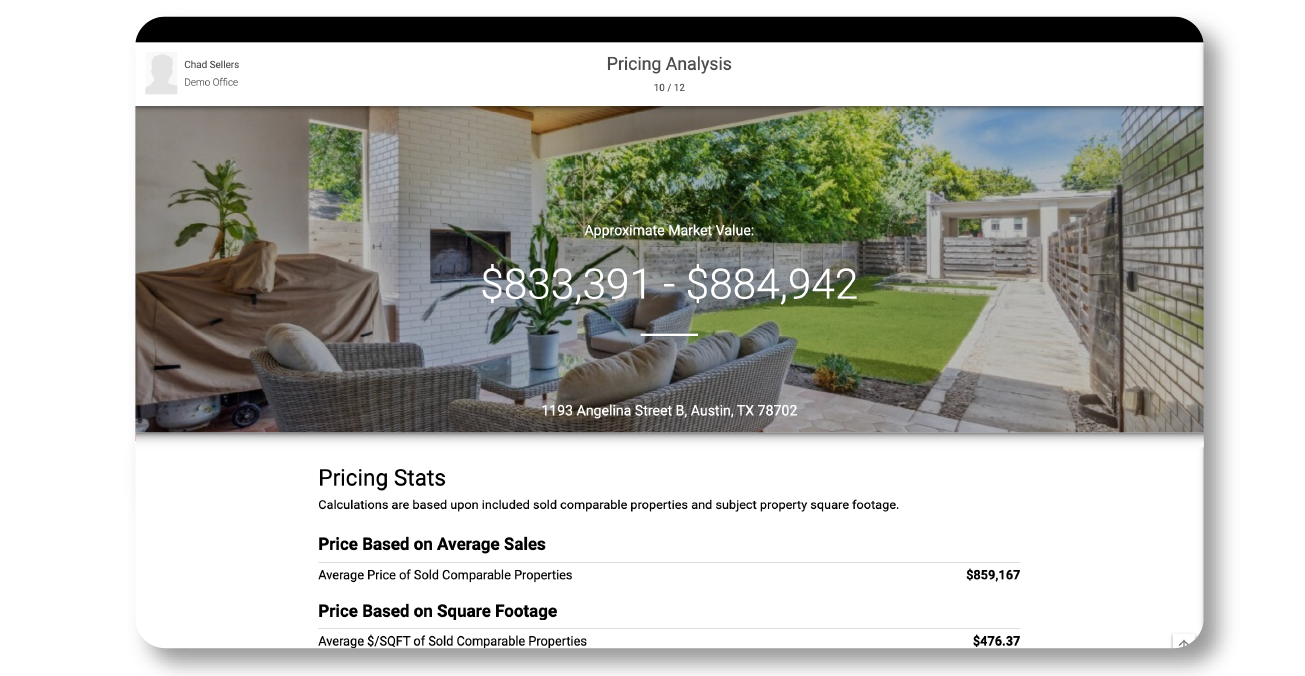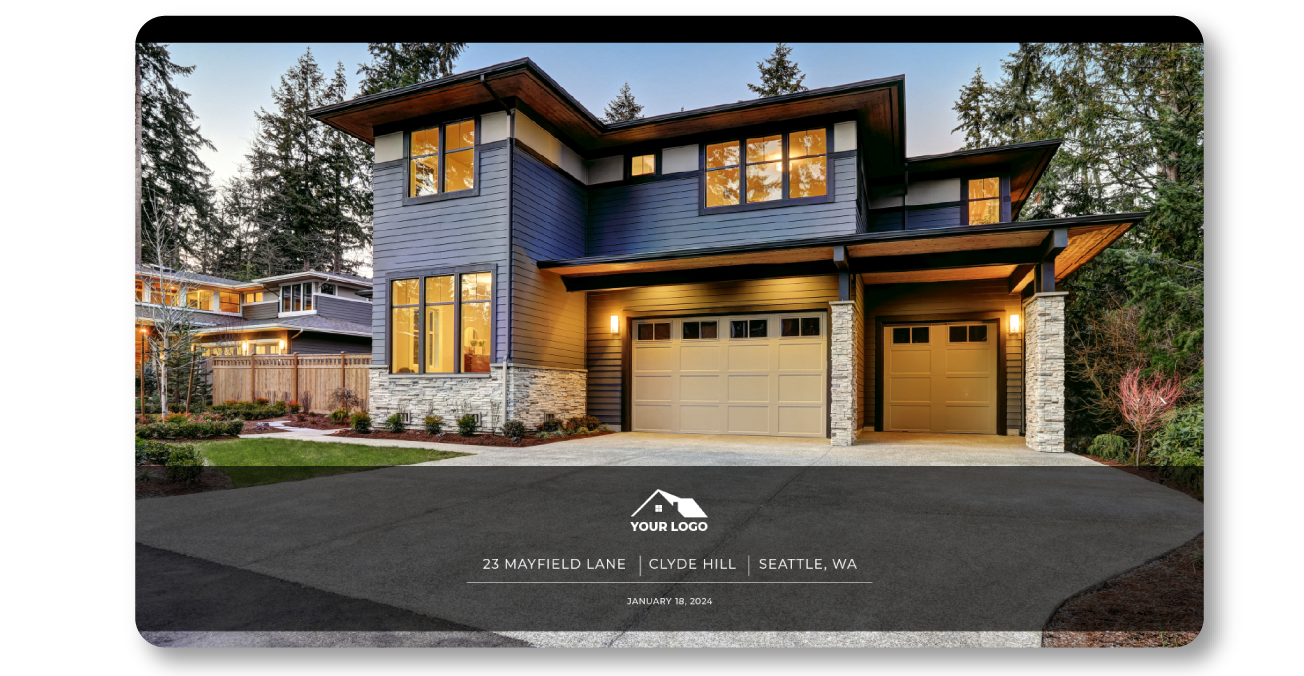A Comparative Market Analysis (CMA) for real estate is the basis for a productive conversation about a seller’s home, and is arguably the most important piece of content in any agent’s presentation toolkit. While its main goal is to deliver your assessment of a home’s value, it can also be the swiss army knife that lets you show your range as an agent and inspire the client confidence you need to win listings.
We know a thing or two about what makes a good CMA: our clients have generated and delivered millions of CMAs, and they’ve reaped the rewards of their work with 77% more transactions on average than their peers without MoxiWorks’ CMA tools. Whether you use MoxiWorks or another tool to generate your CMA, here are 10 key steps every agent should take to make your CMA work as hard as possible for you.
What this post covers:
- What is a real estate CMA?
- What do potential clients look for in a CMA?
- 10 Steps to Creating a Top-Notch Real Estate CMA
- Collect Detailed Information About the Subject Property
- Analyze the Neighborhood and Local Market Trends
- Select Appropriate Comparable Properties (Comps)
- Mix in some Active, Pending, and Expired Listings
- Adjust for Differences Between the Subject Property and Comps
- Calculate Price Per Square Foot
- Establish a Pricing Range
- Lay Out Costs and Calculate Proceeds
- Compile a Comprehensive CMA Report
- Present the CMA to the Client
- Putting it all together
What is a real estate CMA?
A Comparative Marketing Analysis or (CMA for short) is a cornerstone of real estate transactions, providing a detailed estimate of a property’s fair market value. By comparing the subject property to similar properties in the area, real estate agents can guide sellers in setting a competitive listing price or help buyers make informed offers. For a CMA to be truly effective, it must be both accurate and compelling, combining data-driven insights with clear presentation.
What do potential clients look for in a real estate CMA?
- For Sellers: A CMA helps establish a competitive listing price that attracts buyers while maximizing seller return.
- For Buyers: A CMA provides a benchmark to ensure they’re paying a fair price for their investment and hone their offer strategy.
Sellers, in particular, value CMAs that are thorough, easy to understand, and actionable. They want to see clear evidence of how their property compares to others, what makes it unique, and why a specific price range is justified. They should walk away from the CMA presentation feeling like you deeply understand their home and their goals for selling.
That all sounds fantastic, right? But how exactly do you get it done? Without further ado, let’s break down the key elements of a great Real Estate CMA:
10 Steps to Creating a Top-Notch Real Estate CMA
1. Collect Detailed Information About the Subject Property
This is the foundation of your CMA, and getting the subject home’s information correct is a pretty make-or-break moment for any listing-agent-hopeful. The more details you have about the property, the more precise your analysis will be.
- What information to gather:
- Square footage, lot size, number of bedrooms and bathrooms
- Year built and architectural style
- Upgrades (e.g., new roof, remodeled kitchen, energy-efficient systems)
- Special features like pools, views, or proximity to amenities
- How to Accomplish It: Use tax records, MLS data, property surveys, and even homeowner interviews. If possible, tour the property to note conditions not visible in records (and maybe even snap some preliminary photos) for your CMA.
2. Analyze the Neighborhood and Local Market Trends
The property’s surroundings significantly influence its value, and as the local expert, it’s your job to accurately assess their impact.
- Key Factors:
- School district ratings, walkability scores, and safety statistics
- Proximity to shopping, dining, parks, and public transport
- Current supply and demand in the area (seller’s vs. buyer’s market)
- Tools to Use:
- Walk Score for walkability
- Local MLS for active and closed listings

Pro tip: MoxiPresent, MoxiWorks’ best in class presentation tool, helps you integrate neighborhood and market data into your CMA — without the endless cycle of copy: paste: repeat. Learn more about MoxiPresent.
3. Select Appropriate Comparable Properties (Comps)
When it comes to real estate CMAs, selecting relevant comparables is what separates the good from the “Hmmm, I’m not so sure about this”. Comparables are properties similar to the subject that have sold recently or are currently on the market.
- Best Practices:
- Stick to the same neighborhood or within a close radius whenever possible.
- Prioritize properties sold within the last 3–6 months to reflect current market conditions.
- Ensure similarity in size, age, and features, particularly bedrooms and bathrooms.
- How to Find Them:
- Use your MLS platform or public records to look up suitable properties.
- Filter for key metrics like price range, square footage, and lot size.
- In MoxiPresent, leverage its robust search and filtering capabilities to identify comps efficiently.

4. Mix in some Active, Pending, and Expired Listings
While sold properties establish value, current listings provide insight into the competition and pricing trends that are happening now in your area.
- Why This Matters:
- Active listings show what similar properties are currently asking.
- Pending sales indicate the price range that attracts offers.
- Expired listings often highlight overpriced properties or those with poor marketability.
- How to Analyze:
- Compare price per square foot across these categories.
- Note how listing duration correlates with pricing and condition of the homes.
5. Adjust for Differences Between the Subject Property and Comps
Even the best comps will have variations you need to account for to help build the case for including them in your pricing analysis. Adjustments ensure your recommended sale price for the subject property reflects these nuances.
- Examples of Adjustments:
- $10,000 for a new roof
- -$5,000 for lack of a garage
- +$15,000 for a superior location (e.g., waterfront)
- How to Do It:
- Refer to appraisal adjustment guidelines or consult market data to assign dollar values to differences.
- Tools like the MLS or appraisal software can automate some adjustments.
6. Calculate Price Per Square Foot
This metric is often the most important starting point for valuation, especially in homogeneous neighborhoods.
- Formula:
- Price per square foot = Sale price of comp/Square footage of comp
- How to Use It:
- Average the price per square foot of your comps.
- Multiply it by the subject property’s square footage to estimate its base value.
- Adjust further for condition, features, or unique aspects of the home.
7. Establish a Pricing Range
Based on your analysis, determine a realistic pricing range rather than a single number to build some wiggle room into your report.
- Guidelines:
- The lower end reflects a quick-sale price.
- The higher end represents a premium price for ideal market conditions.
- How to Present It: Use a tiered pricing strategy, showing clients how different pricing levels may influence buyer interest and time on market. MoxiPresent makes this easy:

8. Lay Out Costs and Calculate Proceeds
One of the primary goals of a real estate CMA is to get you and the seller on the same page regarding price. If they are being forced to guesstimate the impact of selling their home, your CMA is only giving them half the story. Even worse, it may be setting you up for a poor client experience if surprising costs or fees rear their heads late in the process. Lay out all key costs to make sure everyone walks away feeling well-informed.
- Common elements:
- Closing costs
- Seller commission payments
- Buyer commission payments
- How to nail it:
- Create a simple, transparent calculation for Gross Proceeds and Net Proceeds at both ends of your pricing range
- Be sure to explain any assumptions you’ve made, e.g. interest rates or taxes
- Be prepared to explain and justify your commission fees

9. Compile a Comprehensive CMA Report
Your CMA must present data clearly and persuasively to build trust with your client.
- What to include:
- A summary of the subject property
- Comps with photos, prices, and descriptions
- Charts showing pricing trends and market statistics
- Your recommended pricing range
- Proceeds from a sale
- How to Make It Shine:
- Use brand colors, logos, and fonts for a consistent look
- Always use high quality images in your report, incluing homes, yourself, etc.
- Avoid too many words on a slide, opting to memorize key talking points instead
Pro tip: You can use free tools such as Google Slides to pull a cohesive CMA report and presentation together, if you have the time to fuss over it. For stunning presentations that take just minutes to create, personalize, and look impressive, MoxiPresent is your CMA tool.
10. Present the CMA to the Client
Now’s your chance to shine! A strong presentation builds credibility and ensures your client understands your pricing strategy in and out.
- Best Practices:
- Explain the process and the rationale behind your selections.
- Use visuals (graphs, maps, and photos) to support your points.
- Address client concerns and offer actionable suggestions.
- How to Do It:
- Practice your delivery to ensure a smooth flow of information
- Anticipate common questions and prepare polished answers
- Think about ways to spend more or less time on different features of your CMA report depending on client preferences
Pro tip: Client just isn’t feeling a comp? With MoxiPresent’s digital CMAs, you can easily swap properties on the fly and keep right on moving with fresh data from the MLS in an instant.

Putting it all together
Whether you’re pricing a home for sale or helping a buyer make an offer, mastering CMA skills will position you as a trusted market expert. Try these key steps to level up your next CMA, and consider upgrading your stack with MoxiPresent to easily integrate them all into your presentation toolkit.



